
Classicism: strict ideals of high style - characteristics, history, iconic classicists
Classicism is a broad aesthetic movement in art that influenced painting, architecture, sculpture, literature, and theater from the 17th to the 19th centuries. The aesthetics of classicism laid the foundation for the corresponding artistic style. Its significance for the development of European culture is so profound that it's often referred to as the era of classicism. The term originated from the French language (classicisme), derived from the Latin word "classicus," which means "exemplary."
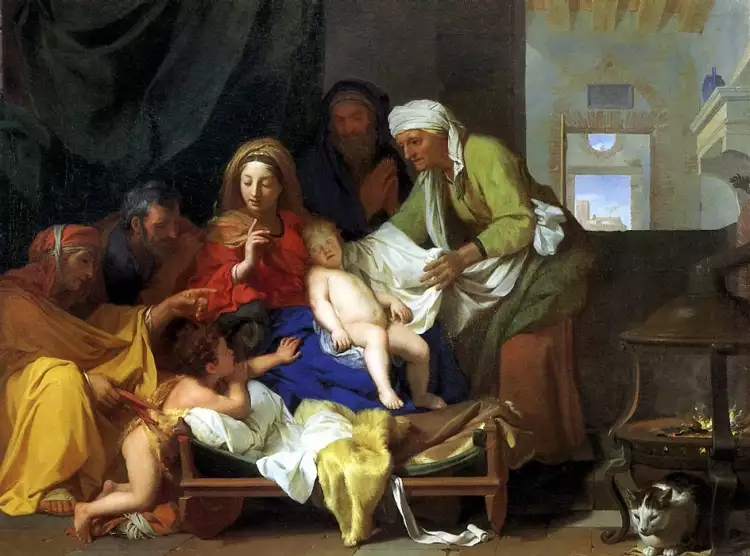 Classicism. Charles Le Brun. The Sleep of the Infant Jesus or The Silence, 1655
Classicism. Charles Le Brun. The Sleep of the Infant Jesus or The Silence, 1655
Classicism as a style took shape in France during the 17th century, where it reached its highest development. However, there were also classicists in other countries, and this movement gained European importance. A distinct form is Russian classicism, which emerged during the reign of Catherine II. Since the era of Neoclassicism had already begun in Europe at that time, the Russian branch is sometimes also associated with neoclassicism.
Distinctive Features of Classicism:
Classical artists, like the painters of the Renaissance, saw the ideal in ancient art. Their work was in many ways a reaction to the changing Renaissance traditions of Mannerism and Baroque. Classical masters returned to the simplicity and harmony of the Renaissance, emphasizing rationality.
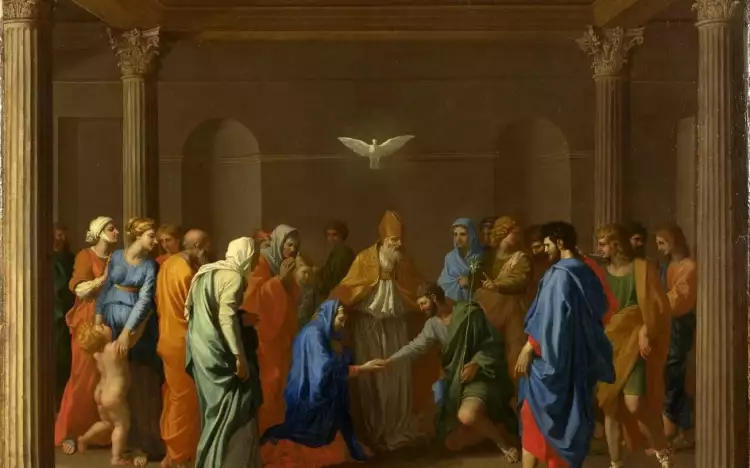 Classicism. Nicolas Poussin. The betrothal of Mary, 1636-1640
Classicism. Nicolas Poussin. The betrothal of Mary, 1636-1640
Characteristics of this style
- Orientation towards the canons of ancient art.
- Strict proportions and compositional balance.
- Inclination towards symmetry and order.
- Geometric simplicity and clarity of lines and forms.
- Relying on logic.
- Harmony, avoidance of dissonance and chaos.
- Adherence to strict rules and canons that form the basis of the pictorial and aesthetic system.
- Striving to depict people as harmoniously developed, close to the anatomical ideal.
- Selection of elevated and eternal themes.
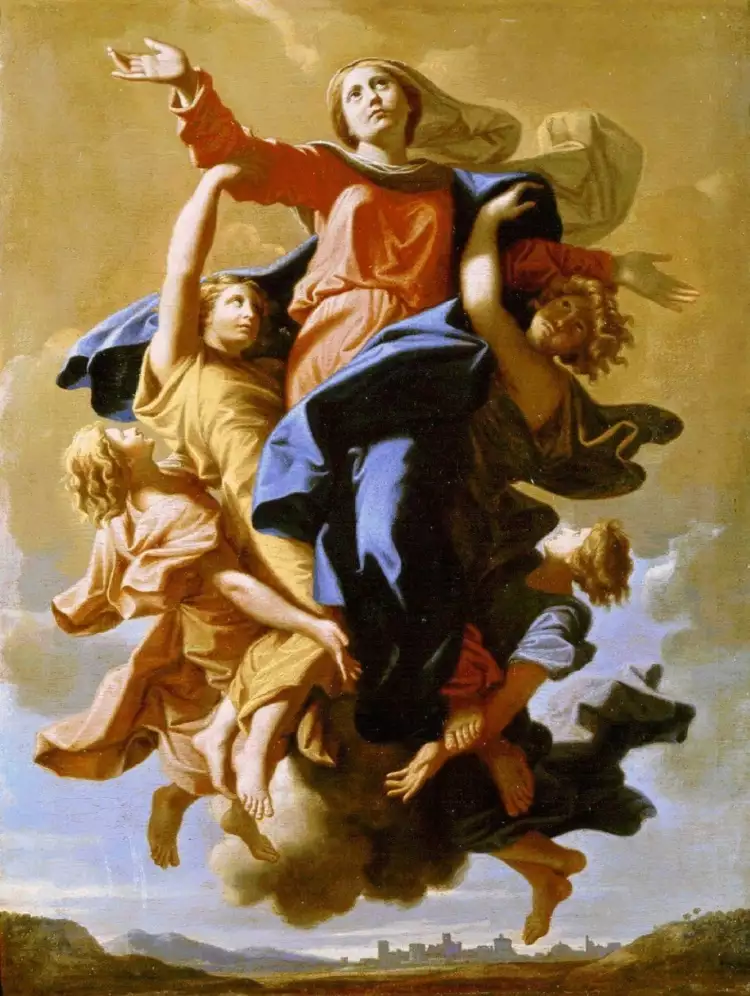 Classicism. Nicolas Poussin. The Assumption of Mary, 1650
Classicism. Nicolas Poussin. The Assumption of Mary, 1650
Classicism and Baroque - Irreconcilable Antipodes
It is easy to notice that classicism is the direct opposite of Baroque. Classicists rejected Baroque aesthetics with its chaos and expressiveness. Their art is cool and rational. For neoclassical artists, reason dominates over emotions, and a strict ideal is contrasted with the extravagance of Baroque forms. In Baroque, there is a high degree of dramatic intensity, sometimes reaching painful extremes, and there is room for the terrifying and monstrous in aesthetics. In classicism, there is nothing of the sort. In paintings of people, sculptural forms prevail, compositions are balanced, and the drama resembles the theatrical declamation of the "high style."
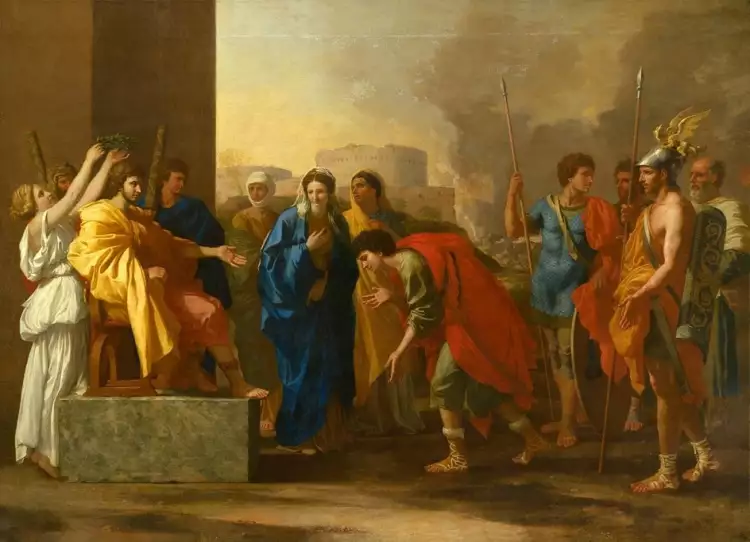 Classicism. Nicolas Poussin. The magnanimity of Scipio, 1640
Classicism. Nicolas Poussin. The magnanimity of Scipio, 1640
Classicism and Baroque coexisted side by side for a long time, representing two poles of European art.
Genre Hierarchy in Classicism
The classicist tradition is characterized by the division of genres into high and low. This principle was observed in painting, literature, and drama. Mixing elements of different genres was considered unacceptable.
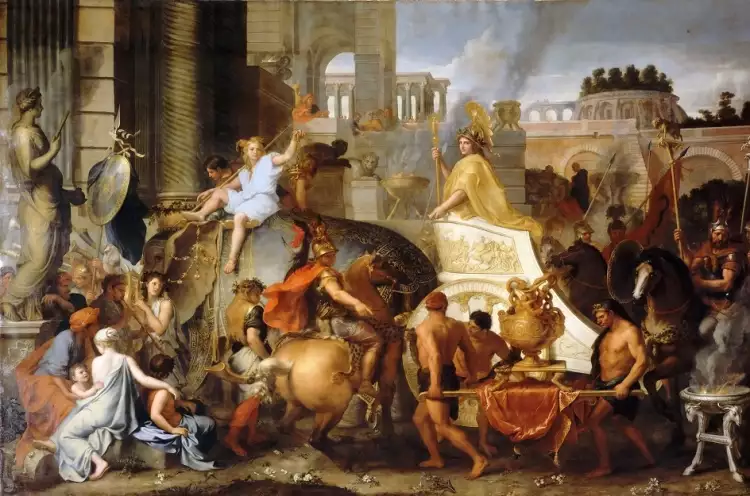 Classicism. Charles Le Brun. Entry of Alexander into Babylon, circa 1664
Classicism. Charles Le Brun. Entry of Alexander into Babylon, circa 1664
High genres included historical, mythological, and religious subjects. In such narratives, heroic motifs often resound, and they can be compared to odes in literature and tragedies in drama. Still life, landscape, and portraiture were classified as low genres. These subjects were considered less significant, more domestic in nature.
Great Names of the Classical Era
The founder of the Classical style is considered to be the French artist Nicolas Poussin, whose paintings on historical and mythological themes (mostly related to antiquity) are distinguished by remarkable geometric compositional precision and balanced color harmony.
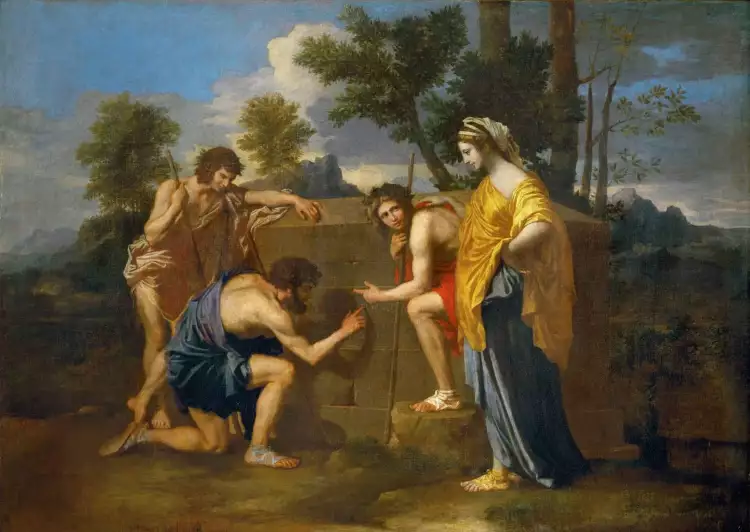 Classicism. Nicolas Poussin. The Shepherds of Arcadia, 1637-1639
Classicism. Nicolas Poussin. The Shepherds of Arcadia, 1637-1639
Great renown was achieved by the landscapes of another Frenchman, Claude Lorrain, who became famous for depicting the surroundings of the eternal city - Rome. These landscapes are called antiquarian, as Lorrain presented views through a historical prism.
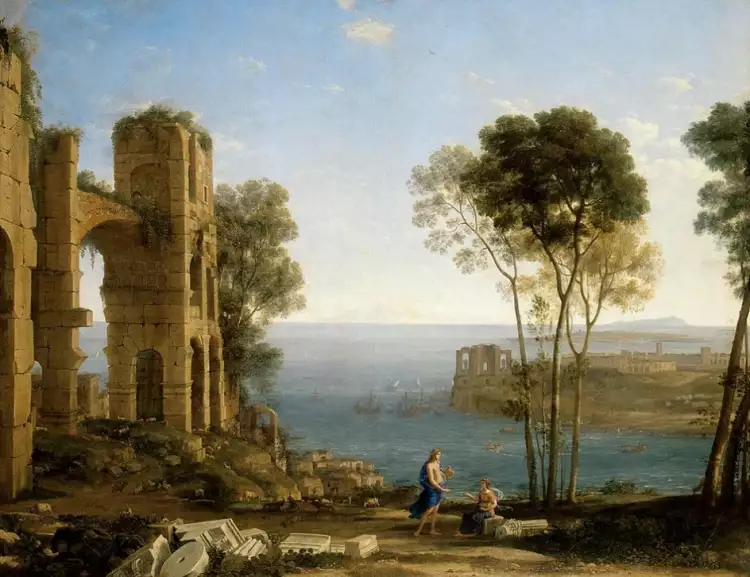 Classicism. Claude Lorrain. Apollo and the Sybil of Cunnes, 1645-1649
Classicism. Claude Lorrain. Apollo and the Sybil of Cunnes, 1645-1649
The new artistic language suited well for praising absolutist monarchy, so Versailles, during the reign of the "Sun King" Louis XIV, favorably embraced this fashionable painting manner. In this domain, the court painter Charles Le Brun particularly excelled.
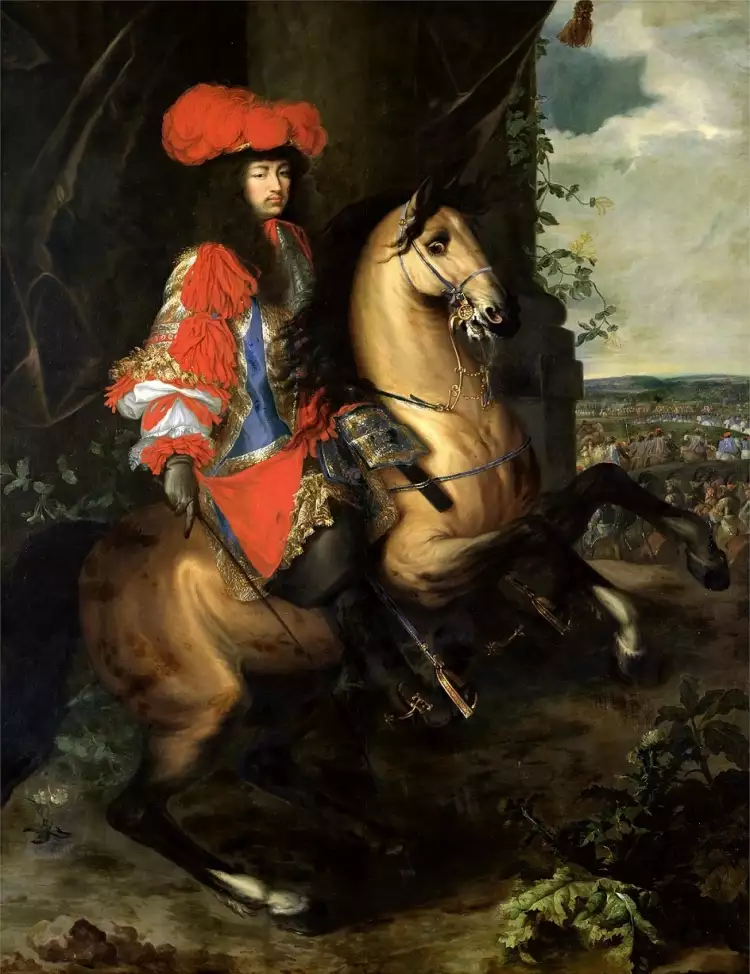 Classicism. Charles Le Brun. Louis XIV Equestrian Portrait, 1661-1662
Classicism. Charles Le Brun. Louis XIV Equestrian Portrait, 1661-1662
In the second half of the 18th century, due to the discovery of frescoes during the excavations of Pompeii, the era of Neoclassicism arrived. The style gained new vitality, and its main representative became Jacques-Louis David with his dramatically laconic canvases full of tragedy and heroism.
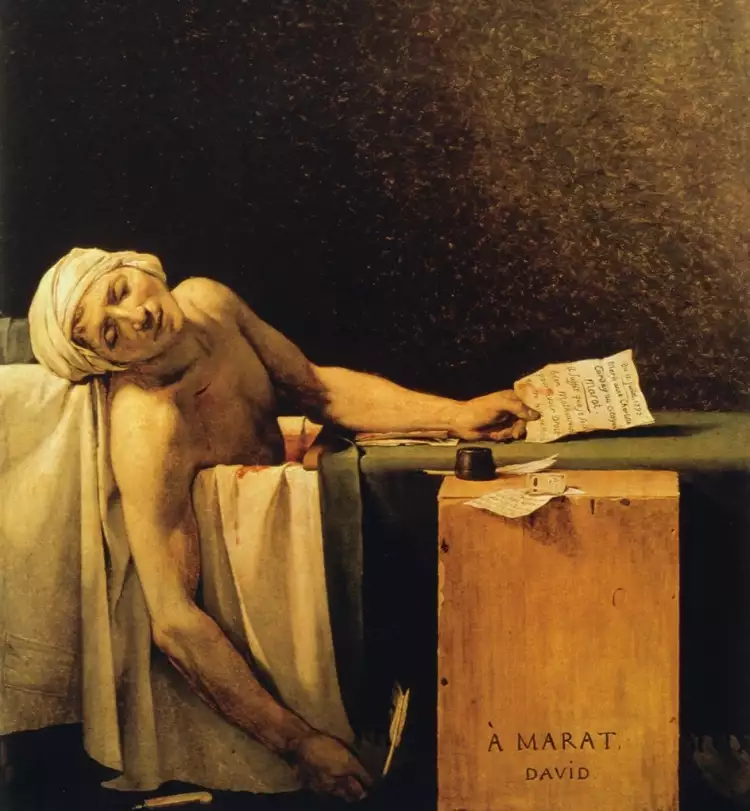 Classicism. Jacques-Louis David. The Death of Marat, 1793
Classicism. Jacques-Louis David. The Death of Marat, 1793
Russian Classicism
The traditions of Classicism came to Russia in the second half of the 18th century, during a new wave of Europeanization associated with the activities of Empress Catherine the Great. Some of the most well-known figures among Russian classical artists are:
- Dmitry Levitsky (1735 - 1822).
- Karl Bryullov (1799 - 1852).
- Fyodor Rokotov (1736 - 1808).
- Vladimir Borovikovsky (1757 - 1825).
- Orest Kiprensky (1782 - 1836).
A wonderful representation of the artistic style is presented in the ceremonial portrait "Catherine II as the Legislator in the Temple of the Goddess of Justice" by Dmitry Levitsky.
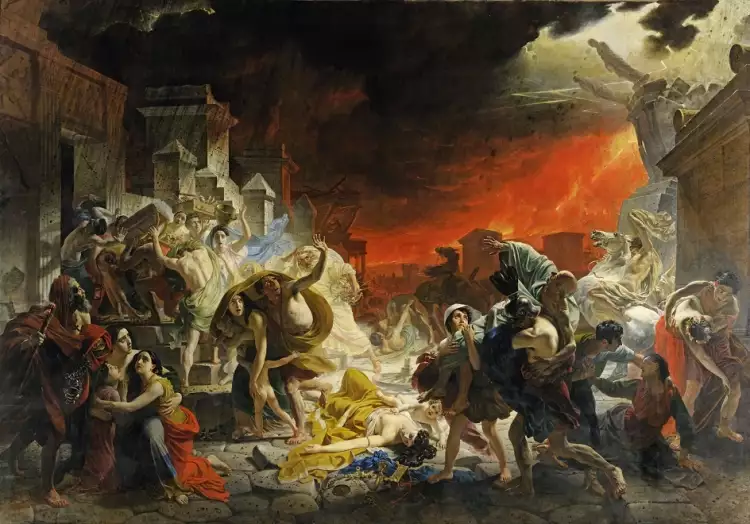 Classicism. Karl Bryullov. The Last Day of Pompeii, 1830-1833
Classicism. Karl Bryullov. The Last Day of Pompeii, 1830-1833
It should be noted that many Russian classical artists incorporated elements of Romanticism into their works. An expressive example is Karl Bryullov's "The Last Day of Pompeii".
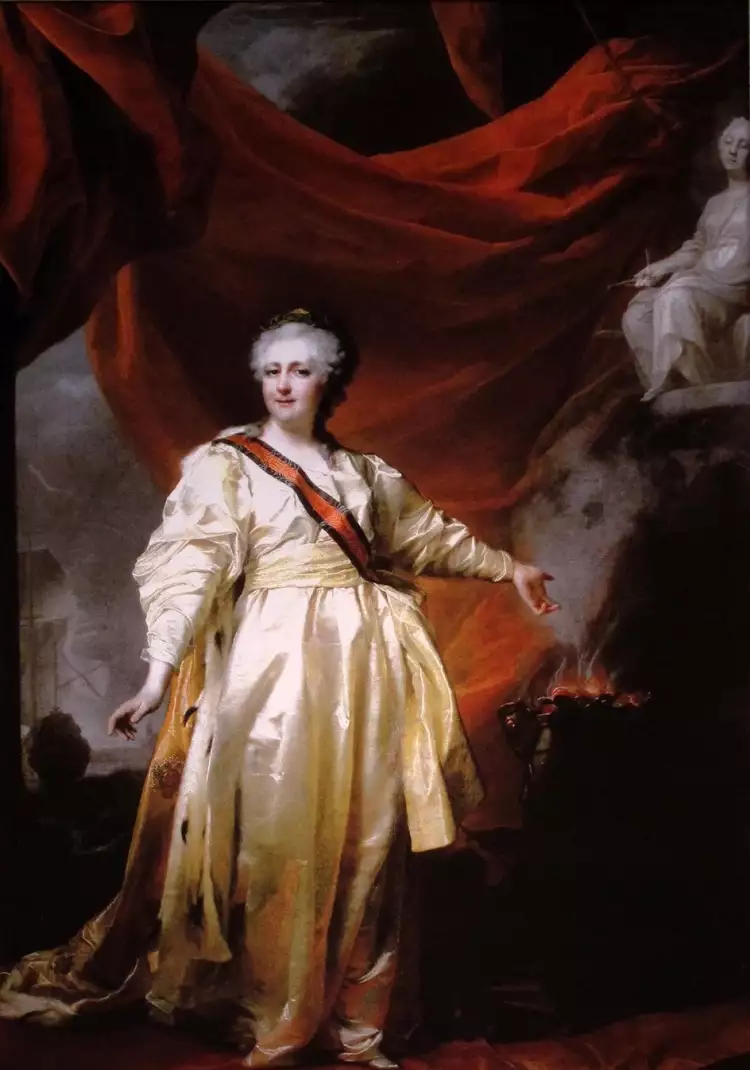
 Giovanni Guida is an Italian artist-innovator and master of grattage
Giovanni Guida is an Italian artist-innovator and master of grattage 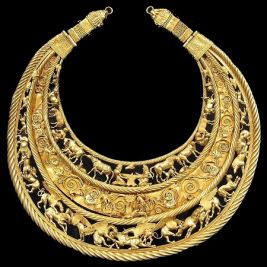 Jewelry craftsmanship - an ancient art of creating unique masterpieces from precious materials
Jewelry craftsmanship - an ancient art of creating unique masterpieces from precious materials 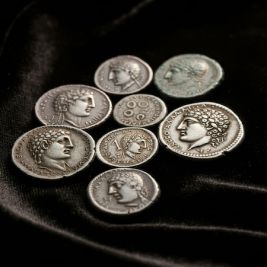 Ancient Greek Coins: A Growing Fascination with History in Your Hand
Ancient Greek Coins: A Growing Fascination with History in Your Hand 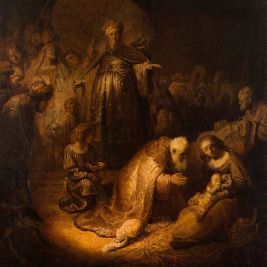 Grisaille is a unique monochromatic art with stunning possibilities
Grisaille is a unique monochromatic art with stunning possibilities 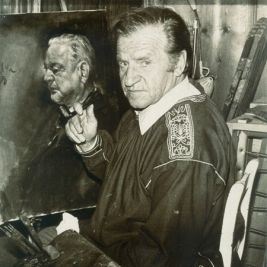 Paul Mathias Padua: Sensitive power nature
Paul Mathias Padua: Sensitive power nature 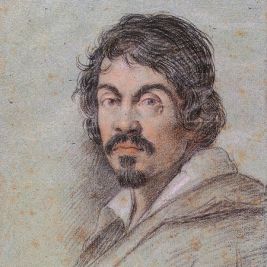 Caravaggio was a brilliant painter, an art innovator, and a thorough rebel
Caravaggio was a brilliant painter, an art innovator, and a thorough rebel 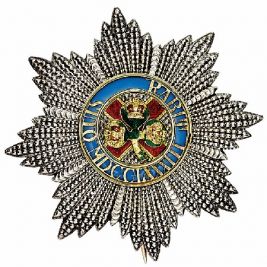 The Order of St. Patrick is the most prestigious Irish distinction
The Order of St. Patrick is the most prestigious Irish distinction 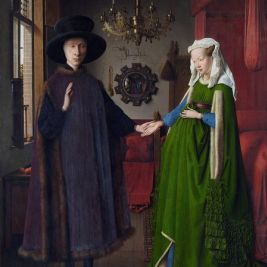 The most famous Dutch painters: 7 renowned masters from Van Eyck to Van Gogh
The most famous Dutch painters: 7 renowned masters from Van Eyck to Van Gogh 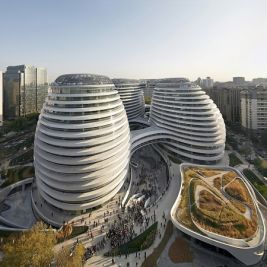 Top 10 Most Famous Architects - The Greatest Master Builders in Human History
Top 10 Most Famous Architects - The Greatest Master Builders in Human History 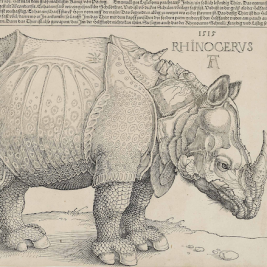 The engraving "Rhinoceros" by Albrecht Dürer - Europe's acquaintance with a curious beast
The engraving "Rhinoceros" by Albrecht Dürer - Europe's acquaintance with a curious beast